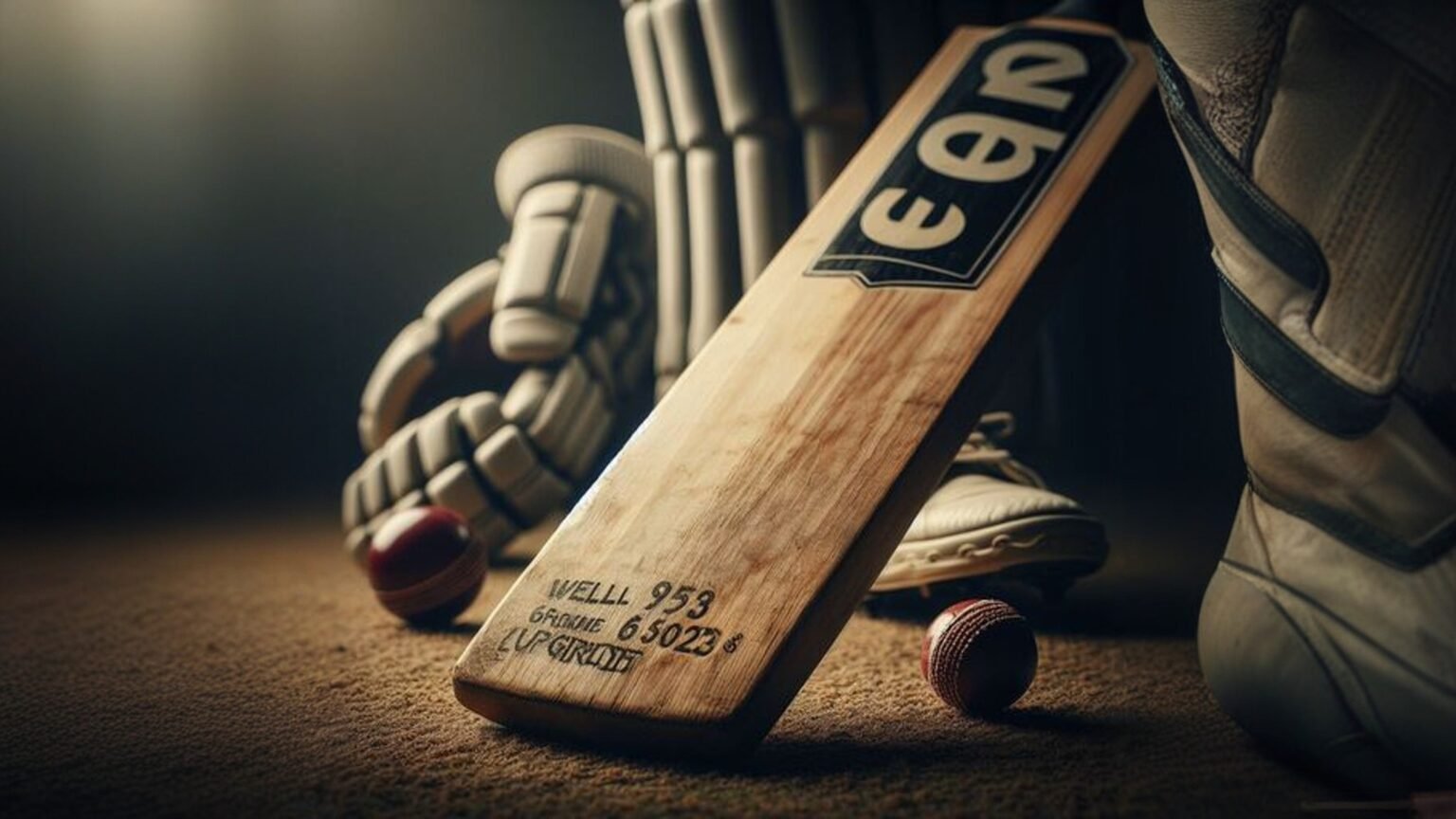Introduction:
Cricket, often dubbed as a gentleman’s game, involves a delicate interplay between skill, technique, and the equipment used by players. One critical aspect of a cricketer’s arsenal is the cricket bat, and its weight is a subject of careful consideration. In this article, we will delve into the intricacies of cricket bat weight, exploring its significance, the rules set by the International Cricket Council (ICC), the impact on player performance, and the diverse preferences among cricketing legends.
Understanding the Normal Weight of a Cricket Bat:
The weight of a cricket bat is not a one-size-fits-all concept. International players, in particular, use bats with weights that suit their playing style and preferences. On average, the weight of a cricket bat used by international cricketers varies from 1.3 to 1.45 kilograms. The choice of weight depends on factors such as the bat’s size, the quality of the willow used, and the player’s personal comfort.
How to Select a Right Cricket Bat
- The most important factor while buying a bat is the price of the bat and the budget of the purchaser. How much money can the buyer spend on the bat?
- The next factor is to determine the use of the bat. Whether the bat is going to be used regularly or just in matches or just in nets initially.
- The next important factor while buying the bat is its size and the height of the person for whom the bat is being purchased. Here is the chart of the size of the bat with the height of a person:
| Height (Feet & Inches) | Recommended Bat Size |
| 4ft and under | 0 |
| 4ft – 4ft 3 inches | 1 |
| 4ft 3 – 4ft 6 inches | 2 |
| 4ft 6 – 4ft 9 inches | 3 |
| 4ft 9 – 4ft 11 inches | 4 |
| 4ft 11 – 5ft 2 inches | 5 |
| 5ft 2 – 5ft 6 inches | 6 |
| 5ft 6 – 5ft 9 inches | Harrow |
| 5ft 9 – 6ft 2 inches | Short Handle |
| 6ft 2 inches and above | Long Handle |
- The next important factor to keep in mind while selecting a bat is its weight. Whether the player likes to play with light weighted bat or heavy weighted bat.
- After that shortlist a few bats which match all the above criteria.
- Then pick each bat, see its grains, blade, and handle, and do a no. of shadows to see the balance of the bat.
- When all the criteria are satisfied then select the new bat.
ICC Rules for Cricket Bats:
The International Cricket Council (ICC) governs the rules of international cricket, including specifications for cricket bats. The latest amendments, formulated in October 2017, set out regulations on bat dimensions. The maximum length is 38 inches, the width should not exceed 4.25 inches, the overall depth must be under 2.64 inches, and the edge cannot surpass 1.56 inches. Umpires are equipped with bat gauges to ensure compliance.
Types of Bats and Their Weight:
Cricket bats are generally categorized into two types based on weight – light and heavy. A lightweight bat, approximately 1150 grams, is favored by younger or less experienced players, facilitating a broader range of shots and technique development. On the other hand, heavy bats, around 1600 grams, are wielded by powerful or bulky players, often in the later stages of an innings when the ball has aged.
Impact of Bat Weight on Player Performance:
The weight of a cricket bat plays a pivotal role in a player’s performance. The relationship is direct, influencing timing, accuracy, power, and control. Playing with a bat that does not match the player’s style can lead to suboptimal performance. While a heavier bat can provide more power, it may restrict the player’s ability to execute certain shots. Striking the right balance in bat weight is essential for a cricketer’s success.
Bats Used by Famous Cricketers:
Examining the preferences of renowned cricketers sheds light on the diversity in bat weights. Lance Klusener, known for his powerful hitting, used one of the heaviest bats in cricket, weighing around 3.375 pounds. Surprisingly, Sachin Tendulkar, hailed as the ‘God of Cricket,’ wielded a bat weighing approximately 3.25 pounds. Chris Gayle, Virender Sehwag, MS Dhoni, and Virat Kohli also had distinct preferences, showcasing the individualized nature of bat choices.
Maintaining the Proper Weight of the Bat:
Proper maintenance is crucial to ensure a cricket bat retains its intended weight and performance characteristics. Storing the bat correctly, regularly stroking it, applying oil or wax, using rubber grips, and avoiding extreme weather conditions contribute to maintaining the bat’s weight. These practices not only preserve the equipment but also enhance its longevity and performance.
Cricket Bats and Injuries:
Using a bat with an inappropriate weight can lead to injuries, potentially forcing players into rehabilitation or extended breaks from the sport. Heavy bats, when used beyond prescribed limits, may result in injuries to the spine, back, hamstring, forearm, shoulder, or neck. Sprains, strains, and fractures are potential consequences, underscoring the importance of selecting the right bat weight.
Also Read : Cricket’s Towering Hits: Unveiling the Longest Six in Cricket History at 173 Meters
Conclusion:
In the nuanced world of cricket, the weight of a bat is not a trivial matter. It is a crucial element that can make or break a player’s performance. The ICC’s regulations, diverse preferences among players, and the impact on performance underscore the significance of understanding and choosing the right cricket bat weight. As we celebrate the diversity in cricketing styles, it becomes evident that the art and science of cricket bat weight contribute to the rich tapestry of the sport.







